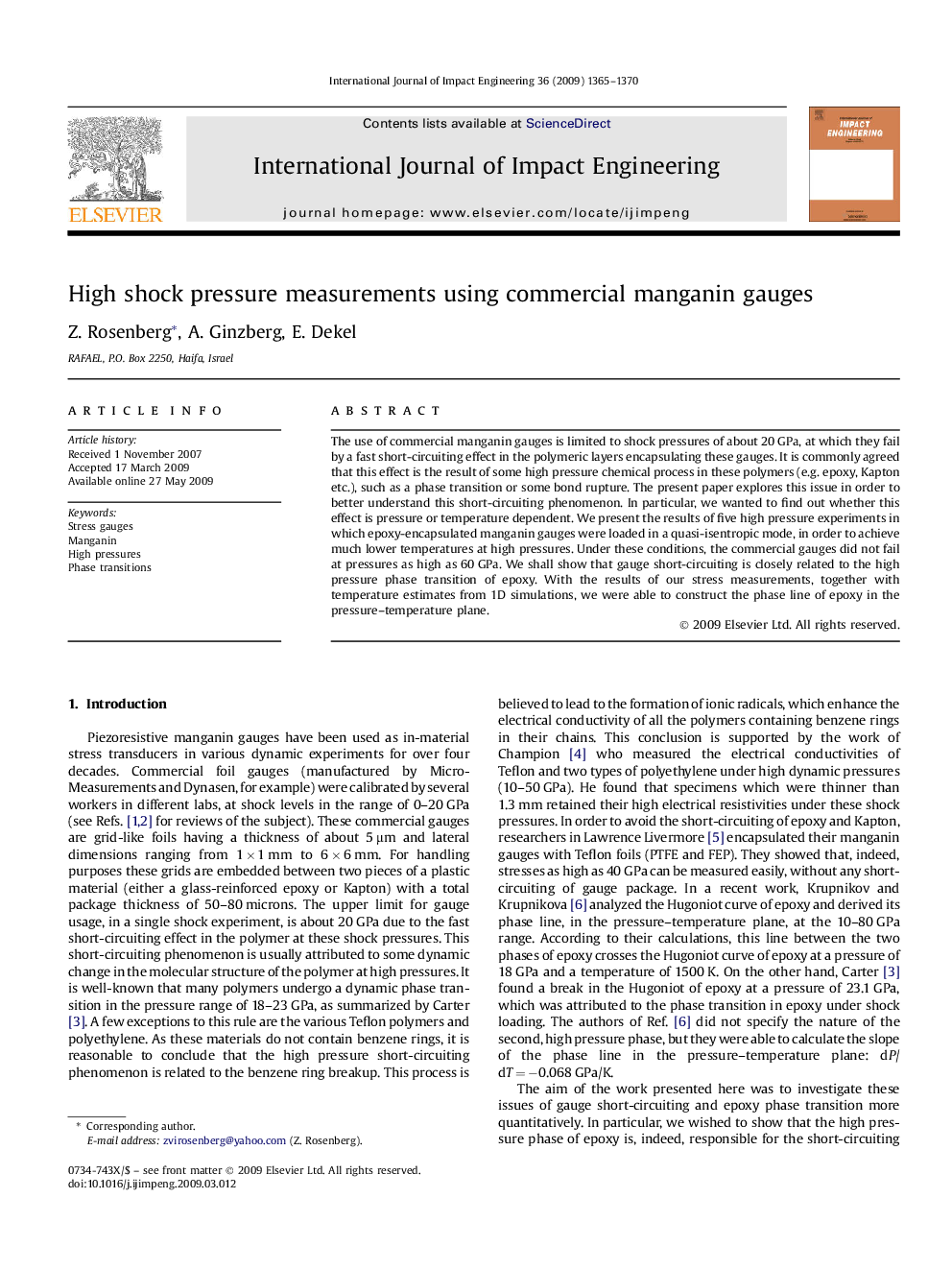| کد مقاله | کد نشریه | سال انتشار | مقاله انگلیسی | نسخه تمام متن |
|---|---|---|---|---|
| 779699 | 1464134 | 2009 | 6 صفحه PDF | دانلود رایگان |

The use of commercial manganin gauges is limited to shock pressures of about 20 GPa, at which they fail by a fast short-circuiting effect in the polymeric layers encapsulating these gauges. It is commonly agreed that this effect is the result of some high pressure chemical process in these polymers (e.g. epoxy, Kapton etc.), such as a phase transition or some bond rupture. The present paper explores this issue in order to better understand this short-circuiting phenomenon. In particular, we wanted to find out whether this effect is pressure or temperature dependent. We present the results of five high pressure experiments in which epoxy-encapsulated manganin gauges were loaded in a quasi-isentropic mode, in order to achieve much lower temperatures at high pressures. Under these conditions, the commercial gauges did not fail at pressures as high as 60 GPa. We shall show that gauge short-circuiting is closely related to the high pressure phase transition of epoxy. With the results of our stress measurements, together with temperature estimates from 1D simulations, we were able to construct the phase line of epoxy in the pressure–temperature plane.
Journal: International Journal of Impact Engineering - Volume 36, Issue 12, December 2009, Pages 1365–1370